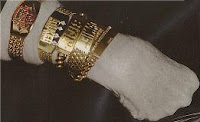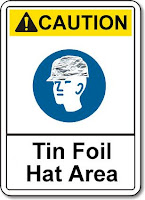2007 WSOP, Day 30: Riding the Happy Train to the Final Table
 Tom Schneider has made another final table -- his third this year. And again, he’s playing the game he loathes, Stud Eight-or-Better. You can follow the final table for Event No. 46 over on Poker News. Also head over to Pokerati, where Dan “Milwaukee’s Best Light is the Best Beer Around” Michalski is posting regular updates on Tom’s progress.
Tom Schneider has made another final table -- his third this year. And again, he’s playing the game he loathes, Stud Eight-or-Better. You can follow the final table for Event No. 46 over on Poker News. Also head over to Pokerati, where Dan “Milwaukee’s Best Light is the Best Beer Around” Michalski is posting regular updates on Tom’s progress.Schneider has made no bones about his dislike of Stud/8. Before the WSOP began, he explained on Beyond the Table his intention not to play any of the Stud or Stud/8 games. After winning the bracelet in Event No. 5 (the $2,500 Omaha/8-Stud/8 event), Tom was interviewed by Jay “WhoJedi” Newnum. When Newnum asked him about that event’s format, Tom unhesitatingly replied “I actually didn’t want to play in this event because I hate Stud 8-or-better. I can’t stand the game.” However, the day the tourney began (Sunday, June 3), Tom found himself without a tourney to play and, as he says, “decided to play in this because I had nothing else to do.” (Here’s a summary of Tom’s victory in Event No. 5 that also includes a link to the PokerNews interview.)
I’ve been looking back through Tom’s book, Oops! I Won too Much Money: Winning Wisdom from the Boardroom to the Poker Table, looking for clues for why he might be doing so well playing a game he hates so much. I think I might have found a chapter that has some relevance here, the one called “Jump on the Happy Train.”
Tom’s point there is to emphasize the benefits of keeping oneself in a good mood at the poker table. Even in the face of heavy losses, he consciously rides the “happy train” (which Tom admits is an intentionally silly-sounding phrase), as opposed to the “miserable train” or the “everything-sucks train.” He goes on to describe his efforts to keep the mood upbeat at the table, telling jokes, singing, and laughing. “I find that I play better when I’m happy,” he explains. As is the case with just about all of the chapters in the book, the advice also applies beyond the table (pun intended).
Clearly Tom is having fun at these split-pot and mixed events, and I suspect the lower expectations (accurately-formed or not) have something to do with it. Reading through the PokerNews reports from the last couple of tables of Event No. 46 yesterday, one gets the sense that the mood was certainly upbeat, at least among some of the players, as the action wound down. (See, for instance, the post describing table talk about Scotty Nguyen’s two pet monkeys.)
Dan on Pokerati has shared more funnies involving Nguyen and Tom. According to Dan, “Scotty Nguyen is more than a little drinky, and ordering beers for the table. Tom obliged, and thanked him as he tried to tip the waiter. ‘No no! I already tip him. Ten dollars. When I say I take care of it I take care of it.’ ‘You’re trying to get me drunk,’ Tom joked upon taking a big swig, ‘so you can take advantage of me.’” Later on, Dan reports Tom diffusing the situation following an argument between two players and Tony Ma, remaining oblivious to the negative vibes while staying on the happy train.
Best of luck to Tom. A third-place finish would put him in a tie with Jeffrey Lisandro for the WSOP Player of the Year points lead.
Watch where the happy train ends up over at PokerNews' live reports and at Pokerati.
Labels: *high society















 he failed to improve against Erica Schoenberg’s
he failed to improve against Erica Schoenberg’s 
 . Right next to Pauly in the payout schedule is Chris “Jesus” Ferguson (who went out in 118th). Some impressive company there. Nice hand, sir.
. Right next to Pauly in the payout schedule is Chris “Jesus” Ferguson (who went out in 118th). Some impressive company there. Nice hand, sir.













 , Mark Davis raised 17K. Chan raised him all in and Davis called for 5K more. Davis flopped two pair with
, Mark Davis raised 17K. Chan raised him all in and Davis called for 5K more. Davis flopped two pair with 


 . The turn was the
. The turn was the  and the river was the
and the river was the  . Davis won with a straight as Chan mucked his hand.
. Davis won with a straight as Chan mucked his hand.

 , Chan moved all in and Davis called. Chan:
, Chan moved all in and Davis called. Chan: 


 . Davis was ahead with Jacks up. The turn was the
. Davis was ahead with Jacks up. The turn was the  and the river was the
and the river was the  . Chan headed to the rail . . . .”
. Chan headed to the rail . . . .”












